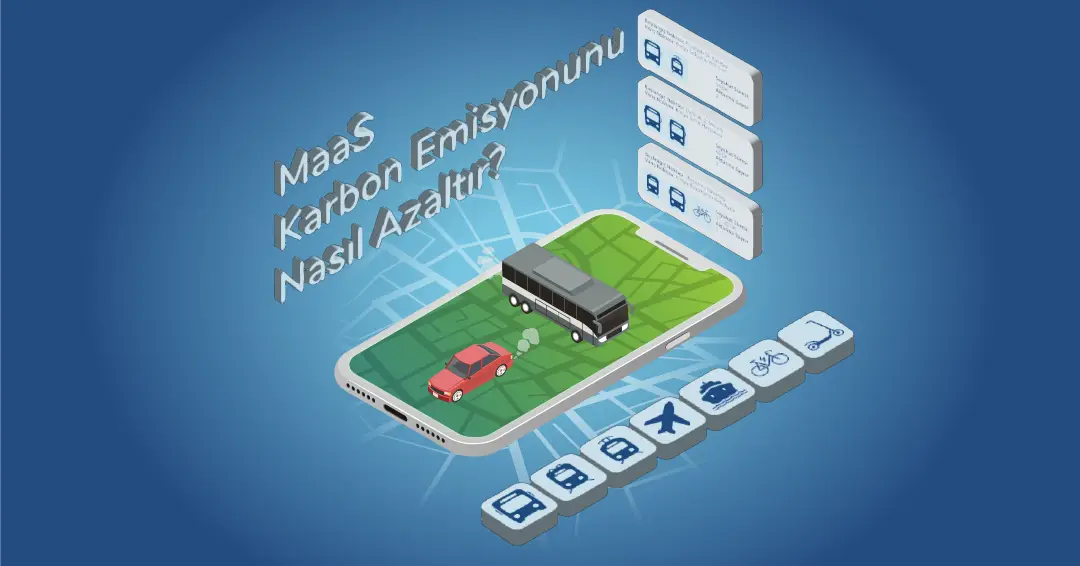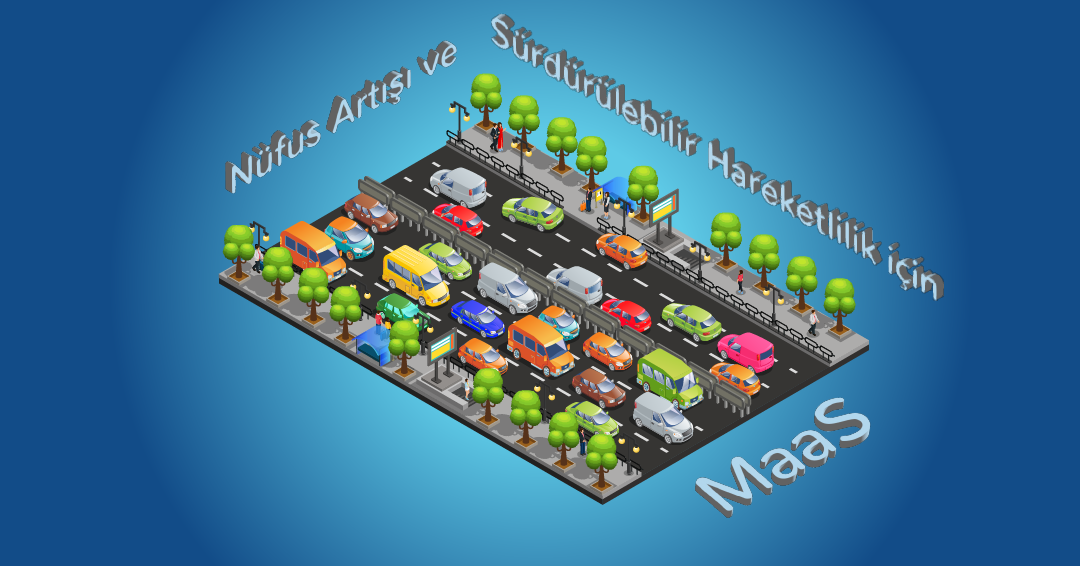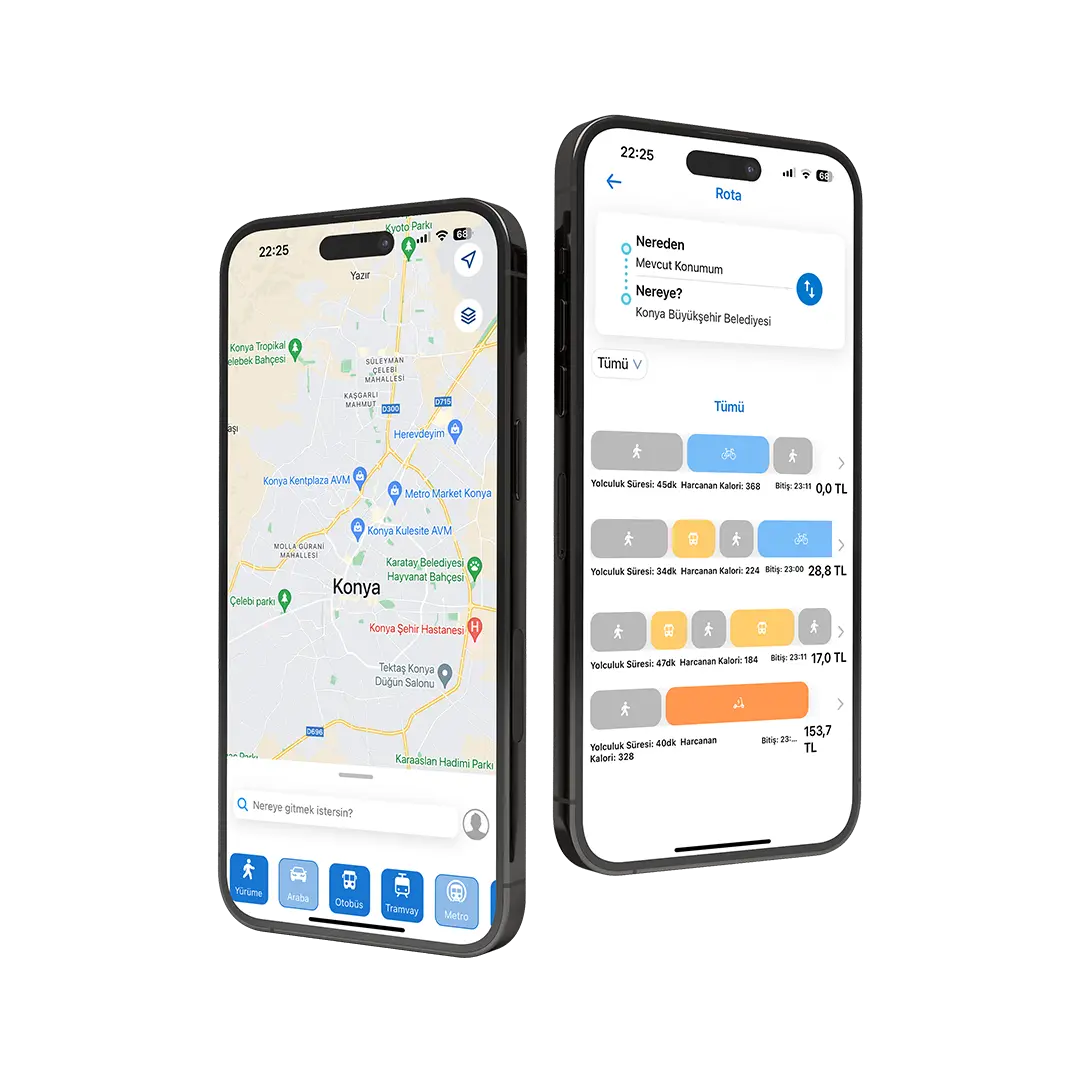Küresel ısınma ve iklim değişikliği çağımızın en önemli sorunu ve ulaşım sektörü de sebep olduğu karbon emisyonu ile küresel ısınmanın en önemli hızlandırıcılarından biri. Geleneksel ulaşım yöntemleri, özellikle bireysel araç kullanımı, karbon salınımını artırarak çevre üzerinde olumsuz etkiler yaratıyor. Dünyada karbondioksit salımının %25’e yakını ulaşımdan ve bunun yaklaşık %20’si taşıt araçları tabir ettiğimiz içten yanmalı motorları olan araçlardan kaynaklanıyor. Ancak, hizmet olarak hareketlilik – mobility as a service (MaaS) çözümleri, ulaşım sektöründe CO2 emisyonunu azaltmak için etkili bir yol sunuyor. Peki, MaaS CO2 emisyonunu nasıl azaltır?
- Sürdürülebilir Ulaşım Seçeneklerinin Teşviki: MaaS, sürdürülebilir ulaşım seçeneklerini teşvik eder. Toplu taşıma, bisiklet paylaşımı, araç paylaşımı, elektrikli araç kullanımı gibi çevre dostu ulaşım modlarının tercih edilmesini sağlar. MaaS platformu, kullanıcılara bu seçeneklere erişim imkanı sunar ve onları çevreye daha az zarar veren seçeneklere yönlendirir. Bireysel araç kullanımının azalmasıyla birlikte, CO2 emisyonu da önemli ölçüde azalır.
- Akıllı Rotalama ve Trafik Optimizasyonu: MaaS, akıllı rotalama ve trafik optimizasyonu sağlar. Veri analitiği ve akıllı algoritmalar kullanarak trafik akışını izler ve trafiği en aza indirmek için alternatif rotalar veya ulaşım modları önerir. Bu, trafik sıkışıklığının azalmasına ve araçların daha verimli bir şekilde kullanılmasına yardımcı olur. Kısa ve etkili rotalar sayesinde, yakıt tüketimi azalır ve dolayısıyla CO2 emisyonu da düşer.
- Araç Paylaşımı ve Mod Paylaşımı: MaaS, araç paylaşımı ve mod paylaşımını teşvik eder. Her bireyin kendi aracını kullanması, trafik yoğunluğunu ve CO2 emisyonunu artırır. Ancak MaaS sayesinde, araçları paylaşmak veya toplu taşıma gibi farklı ulaşım modlarını birleştirmek mümkün olur. Bu, ulaşımın daha verimli bir şekilde kullanılmasını sağlar ve CO2 emisyonunu azaltır.
- Elektrikli Araçlar ve Sürdürülebilir Enerji Kullanımı: MaaS platformları, elektrikli araçların kullanımını teşvik eder. Elektrikli araçlar, karbon salınımını önemli ölçüde azaltan çevre dostu bir alternatiftir. MaaS, elektrikli araçların kullanımını teşvik ederekCO2 emisyonunu azaltmada etkili bir rol oynar. Ayrıca, sürdürülebilir enerji kaynaklarına dayalı şarj istasyonlarının ve yenilenebilir enerji kullanımının teşvik edilmesiyle de CO2 emisyonu daha da azaltılabilir.
- Ulaşım Talebinin Daha İyi Yönetimi: MaaS, ulaşım talebinin daha iyi yönetilmesine yardımcı olur. Veri analitiği ve tahminleme teknikleri kullanarak, talep yoğunluğunun olduğu bölgelerde ve saatlerde daha fazla ulaşım seçeneği sağlanır. Bu sayede, yolculukların daha iyi planlanması ve ulaşım kapasitesinin optimize edilmesi mümkün olur. Ulaşım talebinin daha iyi yönetilmesi, trafik sıkışıklığını ve gereksiz araç kullanımını azaltarak CO2 emisyonunu düşürür.
Sonuç olarak MaaS çözümleri, ulaşım sektöründeki CO2 emisyonunu azaltmak için önemli bir potansiyele sahiptir. Sürdürülebilir ulaşım seçeneklerinin teşviki, akıllı rota planlaması ve trafik optimizasyonu, araç paylaşımı ve mod paylaşımı, elektrikli araçlar ve sürdürülebilir enerji kullanımı, ulaşım talebinin daha iyi yönetimi gibi faktörlerle MaaS, çevre üzerindeki olumsuz etkileri en aza indirir. Gelecekte daha geniş kapsamlı MaaS uygulamalarının benimsenmesiyle birlikte, CO2 emisyonu daha da azalacak ve daha sürdürülebilir bir ulaşım sistemi oluşacaktır.













